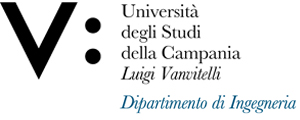Adriana ROSSI
Insegnamento di TECNICHE AVANZATE DELLA RAPPRESENTAZIONE
Corso di laurea magistrale in DESIGN PER L'INNOVAZIONE
SSD: ICAR/17
CFU: 8,00
ORE PER UNITÀ DIDATTICA: 64,00
Periodo di Erogazione: Secondo Quadrimestre
Italiano
| Lingua di insegnamento | ITALIANO |
| Contenuti | L’insegnamento è focalizzato sull’acquisizione di modelli e/o contesti 3D tramite tecnica fotogrammetrica e produzione di contenuti di tipo immersivo tramite reverse engineering. Le analisi e gli approfondimenti critici saranno indirizzati al progetto di interpretazione del caso studio, un bene da divulgare e tutelare con l’ausilio e il sostegno di imprese e musei territoriali. Espedienti di cooperazione digitale saranno impiegati per la comunicazione volta a coinvolgere l’utente al fine di vivere e apprezzare la ricostruzione digitale in funzione della qualità rappresentativa e del livello di attendibilità del bene studiato. |
| Testi di riferimento | Specifiche bibliografie saranno fornite in funzione delle applicazioni concordate. |
| Obiettivi formativi | Il corso si propone di guidare gli studenti nell'applicazione delle proprie capacità critiche sviluppate utilizzando le potenzialità di programmi informatici dedicati alla manipolazione di dati acquisiti con sensori passivi (fotogrammetria) e manipolati digitalmente in ambienti immersivi. A ciascuno studente verrà chiesto di proporre sulla base del rilievo un progetto di comunicazione indirizzato a divulgare e valorizzare il caso studio. |
| Prerequisiti | Conoscenze e abilità garantite nel settore con il rilascio del titolo di laurea triennale in design o affini: segnatamente competenze sulle tecniche di rappresentazione di base (strumenti metodi e procedure) che regolano l'esercizio pratico della grafica digitale e multimediale. |
| Metodologie didattiche | Il corso TAdR è inteso come laboratorio. Agli studenti sarà richiesto, sin dai primi incontri, di lavorare in aula. Gli argomenti trattati e parallelamente applicati dovranno essere approfonditi con studio individuale. |
| Metodi di valutazione | Sono previsti cicli di lavoro consecutivo. Tre prove intercorso accerteranno il raggiungimento degli obiettivi formativi relativi: |
| Altre informazioni | Le attività seminariali, i sopralluoghi nei siti di interesse saranno fondamentali per l’elaborazione del tema d’anno. Il coordinamento gruppi di studio sarà seguito da ricercatori e assegnisti interni coordinati dalla prof. Sara Gonizzi Barsanti con l’ausilio di Visiting Professor e docenti in mobilità Erasmus Plus |
| Programma del corso | Il percorso formativo si articolerà secondo i seguenti temi e fondamenti teorici: |
English
| Teaching language | Italian |
| Contents | The course will focus on the acquisition of 3D models using photogrammetric techniques (image-based techniques) and the production of immersive content through reverse engineering. The critical analyzes and insights will be directed to the project of interpretation of the cultural heritage to be disseminated and protected in cooperation with local businesses and museums. Virtual reality devices (mixed augmented artificial) will be used for the contextualization of the asset and for the shared design. |
| Textbook and course materials | Specific bibliographic references will be suggested and agreed upon applications. |
| Course objectives | The course aims to guide students in the application of their critical skills developed using the potential of computer programs dedicated to the manipulation of data acquired with passive sensors (photogrammetry) and digitally manipulated in immersive environments. Each student will be asked to propose based on the survey and the selective representation of the qualities. Products and services aimed at disseminating and protecting the cultural heritage chosen as a case study. |
| Prerequisites | Knowledge and skills guaranteed in the sector with the release of a three-year degree in design or similar: in particular skills on basic representation techniques (tools, methods and procedures) that regulate the practical exercise of digital and multimedia graphics. |
| Teaching methods | The TAR course is intended as a laboratory. Students will be required, from the very first meetings, to work in the classroom. The topics dealt with and applied at the same time must be deepened with individual study. |
| Evaluation methods | Consecutive work cycles are foreseen. Three tests passed will verify the achievement of the relative training objectives: |
| Other information | Seminar activities, inspections of sites of interest will be fundamental for the elaboration of the year's theme. Internal researchers will follow the coordination of study groups and fellows coordinated by prof. Sara Gonizzi Barsanti with the help of Visiting Professor and Erasmus Plus mobility teachers. |
| Course Syllabus | The training course will be divided according to the following themes and theoretical foundations: |








